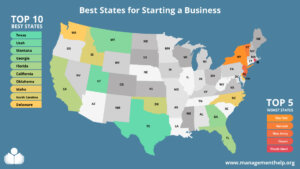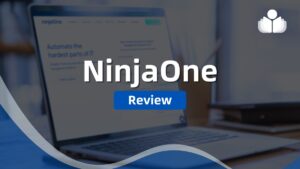In today’s fast-paced business world, top talent isn’t just a luxury, it’s a competitive necessity. The right people fuel innovation, boost productivity, and drive long-term success.
Yet, attracting and keeping the best candidates has become increasingly difficult. With more options than ever, skilled professionals are selective, and companies must work harder to stand out.
This article outlines proven recruiting strategies that help businesses attract and retain high-performing employees. From crafting compelling employer brands to enhancing candidate experiences, these tactics are designed to give you an edge in the modern talent war.
Define Your Ideal Candidate
Before launching any recruitment efforts, defining who you’re looking for is essential. Start with a well-crafted job description outlining the key responsibilities, required skills, qualifications, and relevant experience.
Go a step further by developing competency frameworks and job scorecards—tools that help quantify expectations and standardize evaluation. These ensure your hiring criteria align with broader business goals.
Collaborate with team leads or potential coworkers to shape the role based on real-world needs, not just HR assumptions. This not only sharpens your candidate profile but also increases the likelihood of a successful hire.
Build a Strong Employer Brand
Your employer brand is the reputation your company has as a workplace—and it directly influences your ability to attract top talent. In a competitive hiring market, standing out means showing candidates why they should want to work for you.
Start by highlighting your culture, values, and people. Use your careers page, social media, and blog to feature employee testimonials, growth opportunities, team events, and DEI initiatives.
Showcase how your organization supports development, fosters inclusivity, and gives back to the community. Clear, authentic messaging builds trust and helps you attract candidates who align with your mission and vision.
Leverage Employee Referrals
Employee referrals are among the most cost-effective and reliable hiring methods. Your current team likely knows talented peers who would thrive in your organization.
To tap into this network, create a structured referral program with clear guidelines, streamlined submission processes, and meaningful rewards for successful hires.
Equip employees with shareable job descriptions, talking points, and branded content to help them represent your company accurately. With the right support and incentives, your workforce can become a powerful recruiting engine.
Use Targeted Job Advertising
Casting a wide net with generic job postings often leads to unqualified or mismatched applicants. To attract top-tier candidates, your job advertising strategy needs to be highly targeted.
Start by identifying where your ideal candidates spend their time—this could be niche job boards, industry-specific platforms, or professional forums. Posting in these spaces increases the chances of reaching professionals with the exact skills and experience you need.
Boost your reach further with paid promotions on platforms like LinkedIn, Indeed, and Glassdoor. These tools allow you to narrow your audience by location, experience level, job function, and more.
Refine your approach through A/B testing. Try different versions of job titles, descriptions, and calls-to-action to see which ones resonate most. With a data-driven, targeted strategy, you’ll attract candidates who are not just qualified—but genuinely interested.
Streamline the Application and Interview Process
Top candidates often have multiple opportunities, so a slow or cumbersome hiring process can drive them away. Start by simplifying your application forms—ensure they’re mobile-friendly, easy to complete, and free of unnecessary steps.
Leverage an applicant tracking system (ATS) to organize resumes, automate responses, and keep the process moving efficiently. Quick, clear communication helps candidates feel valued and informed.
For interviews, adopt a structured format with standardized questions and scoring criteria. This improves fairness, reduces bias, and makes it easier to compare applicants.
Finally, keep candidates in the loop. Regular updates and transparency about timelines show respect for their time and can make your company stand out as a professional and thoughtful employer.
Embrace Passive Candidate Outreach
The best candidates aren’t always actively job hunting. Passive outreach allows you to connect with high-caliber professionals who may be open to the right opportunity.
Leverage tools like LinkedIn Recruiter to search for and engage potential candidates. Attend industry conferences, webinars, and virtual meetups to grow your network and build relationships.
Keep a talent pipeline of qualified prospects so you’re prepared to act fast when openings arise. A proactive approach ensures you don’t miss out on top talent simply because they weren’t actively applying.
Prioritize Diversity and Inclusion in Hiring
Diversity fuels creativity, collaboration, and better business outcomes. To make D&I a core part of your hiring strategy, start with bias-reducing practices like anonymized resume screening.
Partner with organizations that support underrepresented groups, and expand your outreach to diverse talent pools. Train hiring teams on inclusive interviewing to ensure fairness at every stage.
A genuine commitment to D&I not only strengthens your team—it also makes your company more attractive to today’s socially conscious candidates.
Offer Competitive Compensation and Benefits
In a competitive hiring landscape, salary alone isn’t enough to win over top talent. Candidates often juggle multiple offers, so your total compensation package must stand out.
Start by researching current market rates for each role and adjusting your offers to match or exceed industry standards. Transparency about pay from the start builds trust and reduces friction later in the process.
Go beyond base salary—highlight valuable perks like flexible or remote work options, wellness, and mental health support, learning stipends, and generous paid time off. Offering a well-rounded, attractive package shows candidates you value their contributions and are invested in their well-being, both inside and outside of work.
Monitor and Optimize Your Recruiting Metrics
To build a consistently effective hiring strategy, you need to track and analyze the right data. Metrics like time-to-hire, cost-per-hire, source-of-hire, and quality-of-hire provide valuable insight into what’s working, and what isn’t?
Collect feedback from candidates on their application experience, and ask hiring managers about the quality and fit of new hires. This dual perspective helps you pinpoint inefficiencies or gaps.
Use the data to refine job postings, streamline workflows, or adjust sourcing channels. Regularly reviewing and optimizing your recruiting metrics ensures your approach stays agile, data-driven, and results-oriented.
FAQ Section – Recruiting Strategies To Hire Top Talent
Recruiting top-tier candidates in today’s market requires more than just posting a job ad. Employers need smart, strategic approaches to stand out and make meaningful connections with the right people.
How Can Small Businesses Attract Top Talent?
Small businesses can compete by emphasizing what makes them unique. Focus on employer branding, showcase your culture, mission, and values through your website and social channels. Offer professional development opportunities, highlight work-life balance, and provide flexible work options. Personalized outreach and a warm, transparent hiring process can help you win over candidates who value authenticity and purpose.
What Is the Most Effective Recruitment Strategy?
The most effective strategy combines several tactics. Start with employee referral programs. They bring in high-quality candidates who already understand your culture. Pair that with a strong employer brand and proactive sourcing, especially for hard-to-fill roles. Layer in structured interviews and data-driven hiring practices to ensure consistency and quality in decision-making.
How Do I Reduce Bias in Hiring?
Reducing bias starts with awareness and intentional tools. Use blind resume screening software to remove identifying details, adopt structured interviews with consistent evaluation criteria, and ensure diverse hiring panels. Providing unconscious bias training for your hiring team also helps create a fairer, more inclusive process.
How Important Is Compensation in Attracting Talent?
Compensation matters—a lot—but it’s not the only factor. Candidates also consider benefits like health coverage, remote work options, mental health support, career advancement opportunities, and company culture. Being transparent about total compensation and perks early on sets clear expectations and builds trust.
Should I Use an ATS?
Absolutely. An Applicant Tracking System (ATS) simplifies the entire hiring process. It helps you manage resumes, streamline communication, stay organized, and reduce time-to-hire. It’s especially valuable for tracking candidates across different stages and making sure no one falls through the cracks.
Conclusion
Hiring top talent is not about luck—it’s about strategy. By defining your ideal candidate, building a strong employer brand, leveraging referrals, and optimizing every stage of the hiring process, you can attract and retain the best professionals in your industry. In today’s evolving talent landscape, a proactive and candidate-centric recruitment strategy is essential for long-term success.
 Sections of this topic
Sections of this topic
















